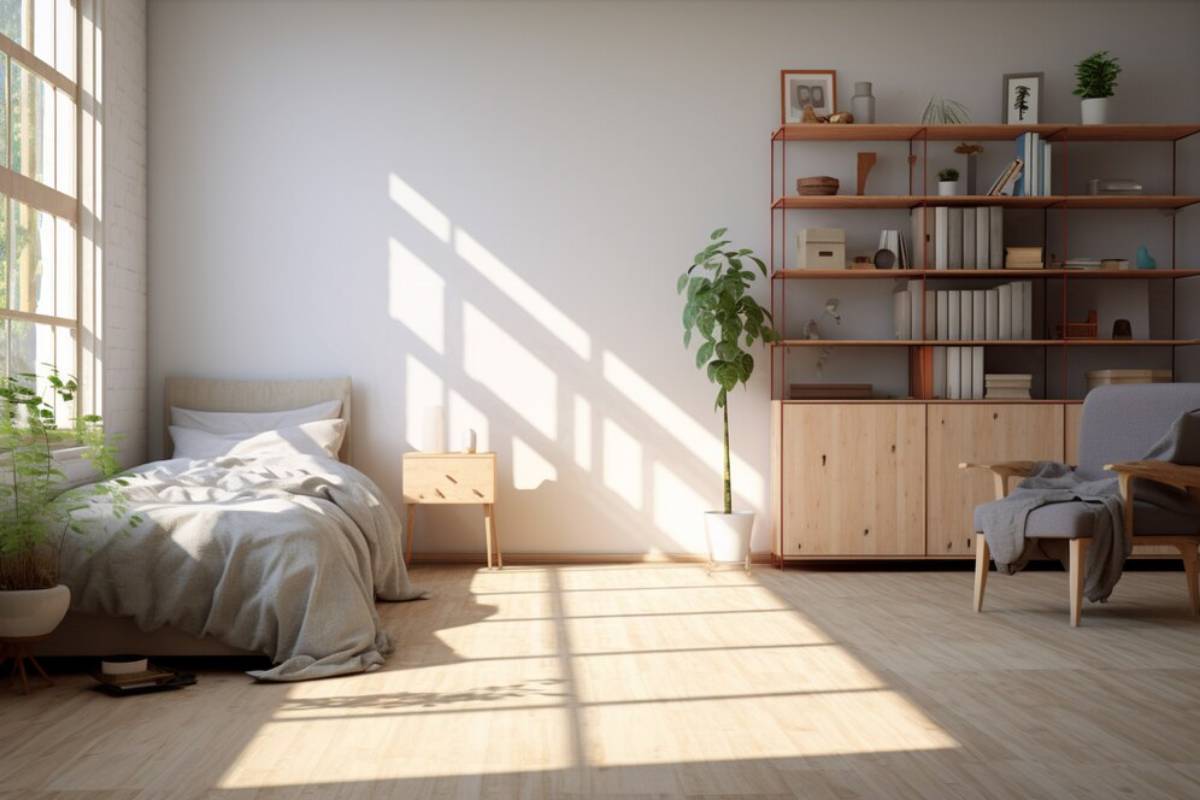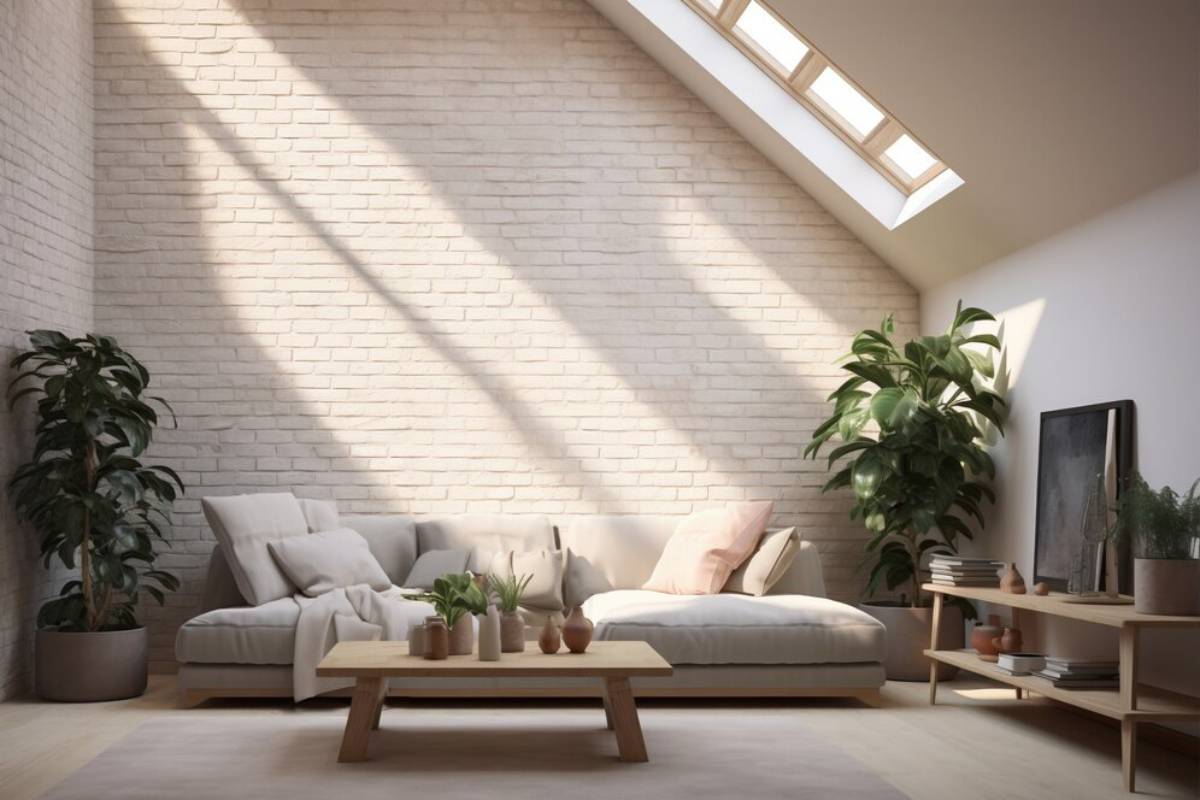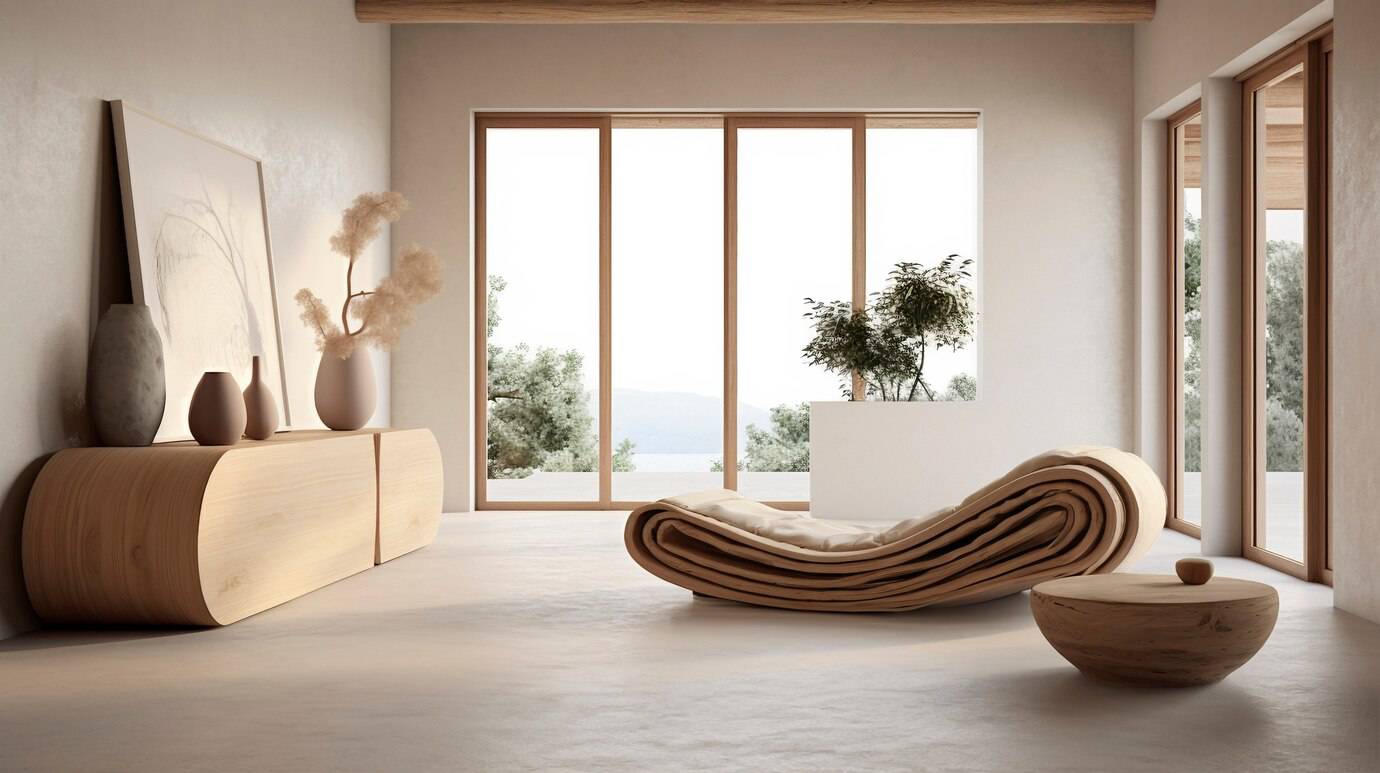
How to Incorporate Natural Light in Any Room
Natural light transforms a space—making it feel more open, more serene, and more alive. But what if your home isn’t flooded with sunshine?
Our team found that even the dimmest rooms can be significantly brightened with intentional design choices. Inspired by Scandinavian interiors—where long winters make daylight a design priority—this guide will show you how to maximise natural light in any room, from north-facing corners to windowless hallways.
Using the right window treatments, reflective surfaces, and spatial layout, you can create interiors that feel radiant, even on grey days.
Pro Tip: It’s not just about letting more light in—it’s about making the most of the light you already have.
Quick Guide: Natural Lighting Tips for a Brighter Home
- Use light, reflective surfaces to bounce sunlight around the room.
- Choose sheer, minimal window treatments.
- Position mirrors strategically to double your daylight.
- Opt for matte finishes on walls and furniture.
- Keep windowsills and glass panes uncluttered.
- Select glass or open-frame furnishings to avoid blocking light.
- Add Nordic-style window design features where possible.
Important: Light is a design element—treat it with the same intention as furniture, colour, or texture.
Why Natural Light Is Worth Prioritising

Natural light is more than an aesthetic—it influences wellbeing, productivity, and even perceived space. It can:
- Elevate mood and energy
- Reduce the need for artificial lighting
- Highlight the textures and tones of your décor
- Create depth and visual interest in minimalist interiors
In Scandinavian design, windows are treated as architectural features. Even in compact spaces, the layout is engineered to maximise brightness and softness.
Step 1: Choose a Pale, Light-Reflective Colour Palette
The easiest way to enhance natural light is to choose a base palette that reflects it.
Best Colours for Light Amplification:
- Soft whites (warm white, ivory, snow)
- Cool greys and greige tones
- Muted pastels like dusty rose, sage, or powder blue
- Light wood tones such as ash or bleached oak
Avoid dark, saturated wall colours in low-light spaces. These tend to absorb light and visually compress a room.
Design Tip: Opt for matte or satin paint finishes—glossy walls can cause harsh reflections, while matte absorbs and diffuses light softly.
Step 2: Maximise Window Exposure
Treat your windows like the light sources they are—not as décor accessories.
Do:
- Use sheer curtains or linen drapes that let in light
- Keep window sills clear of heavy décor or storage
- Choose light-coloured frames (white, natural wood) to reduce contrast
- Hang curtains well above and wider than the window to create the illusion of larger windows and expose more glass
Don’t:
- Block windows with furniture or shelving
- Use heavy, dark drapes in low-light areas
- Hang items directly in front of the window
Pro Tip: In window-poor rooms, consider installing interior glass panels or cut-outs to share light from brighter adjacent spaces.
Step 3: Use Mirrors to Reflect and Multiply Light
Mirrors are a designer’s secret weapon for bringing brightness to dark spaces.
Best Mirror Placement for Light Enhancement:
- Opposite windows to reflect daylight directly
- Adjacent to doorways to spread light across thresholds
- Behind furniture to expand visual space and bounce ambient light
- In narrow hallways or small bathrooms to eliminate shadows
Choose mirrors with minimal or white frames for a cleaner Scandinavian feel.
Design Tip: Consider mirrored furniture or wall panels for subtle light magnification without sacrificing minimalism.
Step 4: Furnish With Light in Mind
The materials and shapes you choose can either block or support light flow.
Furniture That Supports Natural Light:
- Open-legged or floating furniture to allow light beneath
- Glass coffee or dining tables that let light pass through
- Pale upholstery or natural linen covers
- Low-profile seating that doesn’t disrupt sightlines to windows
Avoid bulky, dark items near windows—they anchor the space visually and block flow.
Scandi Tip: In true Nordic style, keep surfaces clean and shapes streamlined to let light move naturally around the room.
Step 5: Layer Artificial Light Thoughtfully
Artificial lighting won’t replace natural light—but it can supplement it when used well.
Best Practices:
- Use warm-toned LED bulbs (2700K–3000K) to mimic daylight warmth
- Incorporate indirect lighting (e.g. wall sconces, uplighting) to reduce harsh shadows
- Layer with pendant lights, floor lamps, and task lighting for a dynamic glow
- Use dimmers to adjust as natural light changes throughout the day
Lighting Tip: Place light fixtures near natural light sources to extend their effect into the evening.
Step 6: Embrace Scandinavian Window Design Cues
Nordic architecture often includes clever features that enhance daylighting.
Scandinavian-Inspired Window Ideas:
- Deep window sills used as seats or shelves to draw attention to natural light
- Unframed or flush-fitted windows for minimal visual interference
- Clerestory windows (high and narrow) to catch sunlight without sacrificing wall space
- Window groupings or long horizontal strips that stretch across rooms
Even if you can’t renovate fully, you can emulate these principles through window dressing and sightline planning.
Step 7: Bring the Outdoors In
Natural light pairs best with natural textures. Greenery and organic materials help light feel part of the overall experience.
Add:
- Indoor plants near windows to blur the line between inside and out
- Light-toned wood finishes that mirror natural outdoor palettes
- Natural fibre rugs like jute or sisal to ground lightness with texture
- Stoneware or unglazed ceramics for matte accents
Design Tip: Avoid high-gloss surfaces. Scandinavian interiors use soft, natural finishes to diffuse light gently and evenly.
Common Mistakes to Avoid When Maximising Natural Light
| Mistake | Better Alternative |
| Hanging dark, heavy curtains | Use sheer or linen drapes in light colours |
| Painting with gloss to reflect light | Use matte or eggshell for soft diffusion |
| Overcrowding near windows | Keep sills and nearby floorspace clear |
| Using cool-toned LEDs | Choose warm white bulbs that complement natural light |
| Overdecorating walls | Let light “breathe” by leaving walls partially bare |
The Scandinavian mantra: less is light.
Warning: Overemphasis on artificial brightness can make a space feel stark. If you’re compensating for low natural light, balance with texture and warmth—don’t simply turn up the wattage.
Frequently Asked Questions

1. How do I brighten a room with no windows?
Use mirrors, reflective finishes, glass doors, and layered warm lighting. Consider installing interior glass panels to borrow light from neighbouring rooms.
2. What’s the best wall colour for a dark room?
Soft whites or warm neutrals like cream, greige, or blush-tinted white. Avoid bright white—it can appear grey in poor lighting.
3. Can window placement be adjusted without a major renovation?
Not easily. However, enlarging window trim, replacing heavy frames, or using light-coloured treatments can make existing windows more effective.
4. Is daylight different from artificial lighting?
Yes. Natural daylight has a full spectrum of colours, which makes it more balanced and visually pleasing. Artificial lighting can mimic it, but never fully replace it.
5. What flooring helps maximise natural light?
Light wood, matte stone, or pale tiles. Avoid dark carpet or high-shine finishes unless used strategically.
Let Light Lead the Way
Natural light isn’t just about visibility—it’s about emotion, rhythm, and connection to the world outside. With a few intentional changes, even the gloomiest rooms can feel illuminated, grounded, and alive.
Every design choice becomes part of your home’s lighting story, from carefully curated window treatments to reflective surfaces and streamlined furnishings. And in true Scandinavian tradition, you’ll find that when you design for light, you’re really designing for life.


